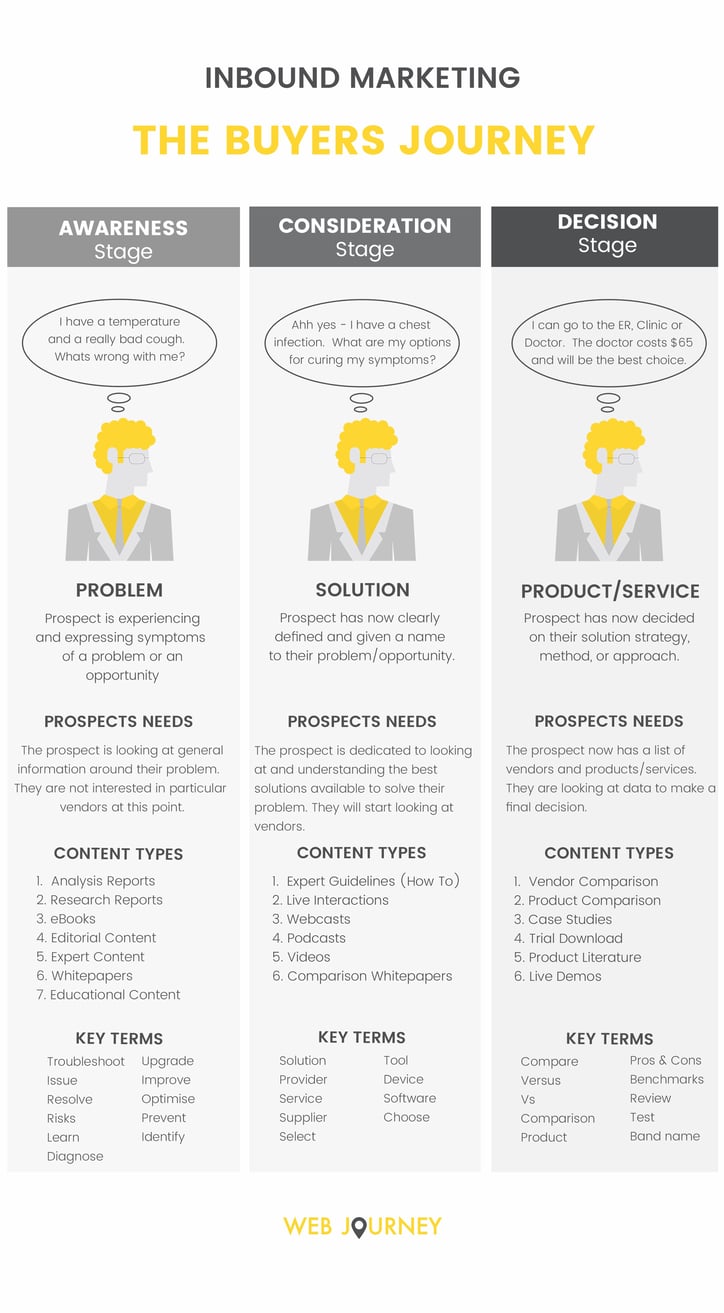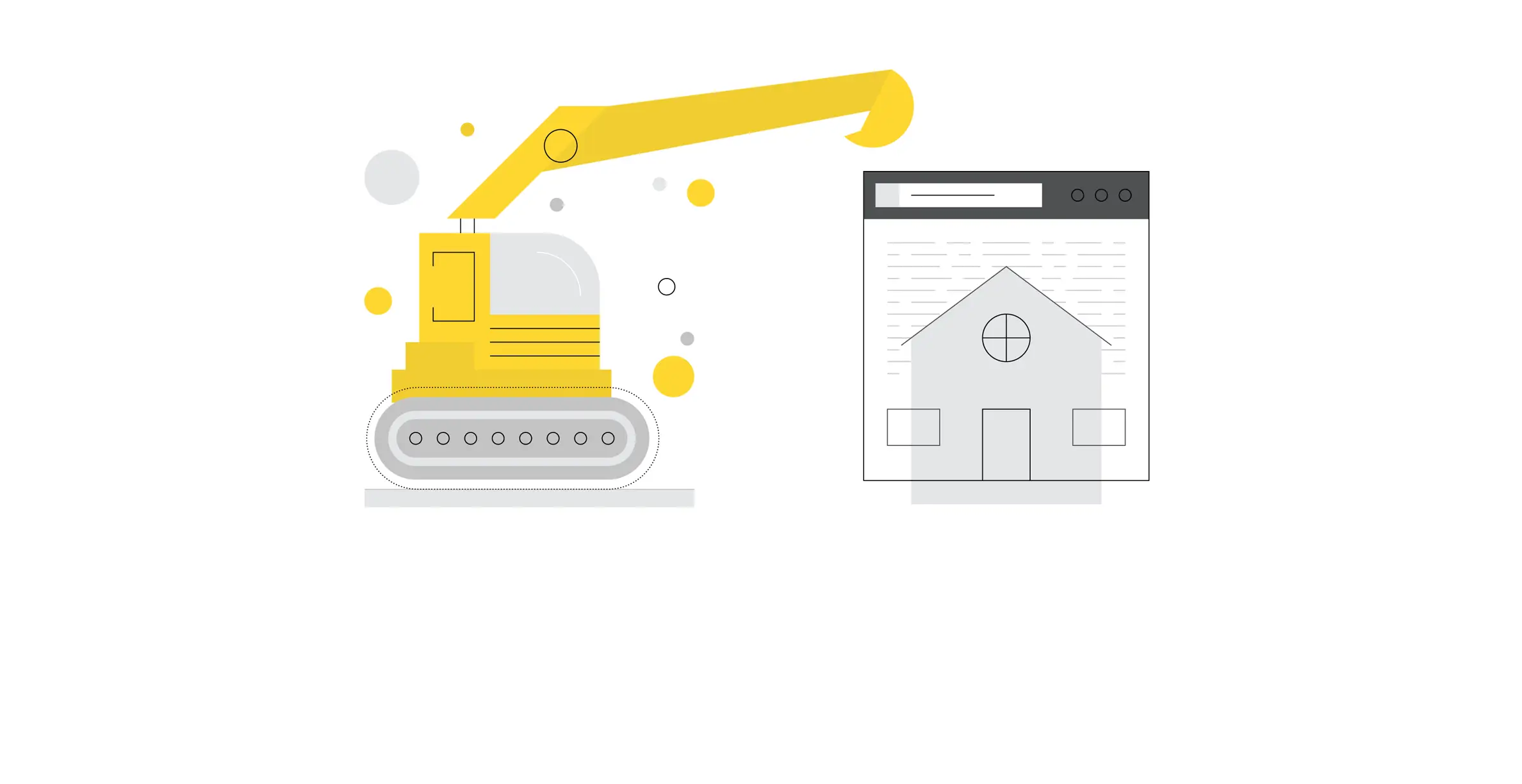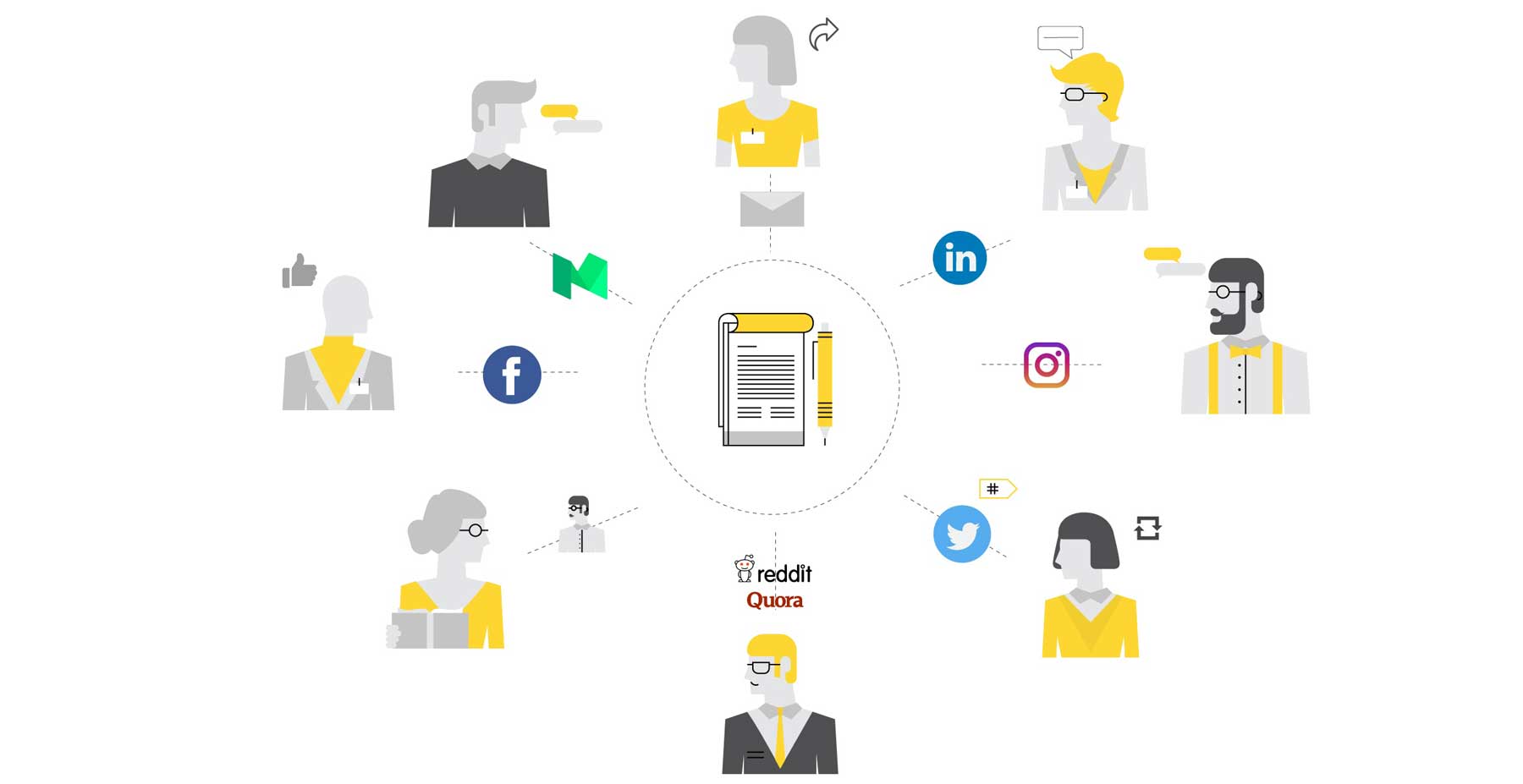In a recent post, we discussed how content marketing needs to be viewed and valued as a strategic business activity (7 Ways Content Marketing Drives Revenue Growth). HubSpot's recent demand generation report found that organizations exceeding their revenue goals were more likely to use content creation, online advertising and branding/public relations marketing tactics, with content creation leading the pack by a substantial lead.
With buyer behaviour evolving, increasing numbers of people now start their search for products and services by looking for information online. So for businesses to generate real growth and compete online, they need to have a digital marketing strategy which includes a well-planned content marketing strategy.
|
47% of buyers viewed 3-5 pieces of content before engaging with a sales rep.[Source: HubSpot] |
But don't just jump into content marketing unless you are ready to fully embrace the value it can add, and the long-term gains and are prepared to commit the time and ongoing resources required to make it successful. There's a lot more to content marketing than just writing blog posts.
According to the CMI, only 30% of B2B marketers say their organizations effectively use content marketing. If you want to improve your results, here are 6 ways to improve the ROI of your content marketing...
1. Know Your Target Audience
We've written many times about the importance of knowing your target audience. If you plan to write content to address their needs, you need to learn as much as possible about them. If you don't know about their goals, challenges, common objections, communication preferences etc then how will you know what content you need to create to add value and address these needs as they move through the buying process (buyers journey)?
A Buyer Persona is a fictional representation of your ideal customer. Having well-defined Buyer Personas is critical, and these are one of the most important assets in your marketing arsenal. Personas should be used to create unique content that speaks directly to and resonates with your ideal audience to help them with their challenges.
If you don't have well-defined buyer personas, then download our guide and free template here...
Top tip's to help create really effective buyer personas include...
- Talking to existing customers
- Monitoring social media activity
- Talking to your sales team
- Talking to your customer services team
- Reviewing data like analytics
2. Set SMART Goals that Align With Business Goals
If you want to get ROI from your content marketing, you need to set content goals that align with your business goals, and be accountable for achieving them. If you want to increase your chances of success even further, then you need to be setting SMART goals:
- Specific
- Measurable
- Attainable
- Relevant
- Timely
If you have goals like these
- Increase brand awareness
- Lead generation
- Drive more traffic
- Convert leads into customers.
- Delight customers and make them evangelists
then make them SMART, and use them as a basis for creating your content marketing strategy.
Start with your business goals like 'increase revenue by 20% in 2024", and agree on how much marketing will need to contribute to that goal. Then break it down further and work out what your content marketing goals need to be month on month to hit that business goal. Set smaller monthly goals you need to achieve to hit the end-of-year goal and measure monthly to keep track of progress and tweak as required.
Check out our recent post Why SMART Marketing Goals Set You Up for Success for more insights into SMART goals and how to set them.
Share these goals with your executive team, sales teams, customer service teams and any other departments that may benefit. After all you should be working as a team and the content that you create can be used by all of them throughout the sales process and to help with customer support and retention.
If you need help planning smart goals then download our SMART Marketing Goals Template...
3. Map your Content to the Buyers Journey
You must meet the needs of your target audience with your content at each stage of the buyer's journey (sales cycle). Below are the 3 key stages buyers go through, their needs and the types of content that can be mapped to each stage along with some of the key terms or buzzwords they are likely to use. 
If you want to learn more about the buyer's journey and how various types of content fit in, then check out our post Sharpen your Marketing Campaigns by Following the Buyers Journey.
4. Create Useful, Unique Content
Now that you have SMART goals, you understand your buyer personas and what stages they go through in the buyer's journey, you need to put together a content strategy and a plan to implement it.
If you are going to use content marketing to achieve growth, you must plan and create content that
- Offers value
- Is relevant
- Is timely
- is unique
DemandGen surveyed companies on their content preferences, and when they asked companies which types of content they had used during the last 12 months to research B2B purchasing decisions, they got the following answers:-
- 78% - Case Studies
- 77% - Whitepapers
- 76% - Webinars
- 67% - eBooks
- 67% - Third Party Analyst reports
When they were asked about what companies could do to improve the quality of the content, they answered as follows:-
- 76% - Use more data and research to support content
- 74% - Curb the sales messages (no surprise here!)
- 71% - Make content easier to access (fewer forms to fill/single click)
- 62% - Provide more benchmarking data
- 61% - Add more insight from industry thought leaders/analysts
So keep these in mind when putting together your content plan.
Also, make sure you include different types of content formats in your plan, such as
- Video
- Interactive content
- Audio
- Infographics
- Slideshares
- Courses etc
Map all content to pain points/challenges/interests that you have identified in your buyer personas. Plan premium content offers with blog posts to promote them for each persona and stage of the buyer's journey. The frequency with which you will need to produce these will depend on your goals.
When planning blog posts for your premium content offers like eBooks and Guides, map out low-difficulty keywords that your buyers may use to search for information and write blog posts around these.
5. Promote your Content
There's no point in creating content if you don't promote it. Use the channels identified in your buyer personas to get the content out to them. If you write good evergreen content, you can continue to promote it; even a year later, it may still be relevant and helpful to your target audience. Use paid channels to further promote high-performing content or high-value assets like detailed guides, eBooks etc to get the most from them.
Include social share buttons on Blogs, Landing Pages, Emails etc. These are essential so that people who find your content valuable can share them with their audience, peers and wider networks.
For more tips on how to best promote your content, then take a look at 12 Effective Content Distribution and Promotion Tactics. At a minimum, make sure email marketing and social media are key areas of focus.
6. Measure Results so that you can Improve
If you have set SMART marketing goals and have identified the metrics you are going to use to measure your success, you will quickly be able to learn what is resonating with your audience and tweak your content based on these results. You should be able to improve your overall marketing results consistently and ROI if you do this regularly.
Depending on what your goal is, use metrics like the following to measure results:-
- Landing page visits
- Conversions
- Conversion rates
- Social Media shares
- Contacts influenced
- Search rankings
- Inbound links
A significant benefit of content marketing is that it helps businesses prepare and plan for reliable and cost-effective website traffic sources and new leads. Content can continue to generate leads over time - even a year later, so having a content marketing strategy in place is a wise investment and worth all the effort you put into it.
If you're planning your budgets for 2018 and need a benchmark, on average, B2B marketers allocate 28% of their total marketing budget to content marketing [Source: CMI].
But make sure you give yourself the best chance of success and use all of these ways to Improve the ROI of your Content Marketing. If you're just starting out then you will be off to a solid start!
If you need help working out your goals then download our free marketing goals template below. Alternatively, if you would like to discuss your content marketing strategy or need any advice on improving results, feel free to contact us.
Originally published: Oct 13, 2017. Updated Oct 30, 2022






